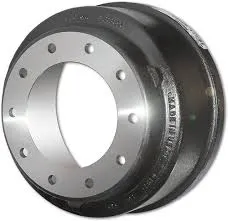
-
 Afrikaans
Afrikaans -
 Albanian
Albanian -
 Amharic
Amharic -
 Arabic
Arabic -
 Armenian
Armenian -
 Azerbaijani
Azerbaijani -
 Basque
Basque -
 Belarusian
Belarusian -
 Bengali
Bengali -
 Bosnian
Bosnian -
 Bulgarian
Bulgarian -
 Catalan
Catalan -
 Cebuano
Cebuano -
 Corsican
Corsican -
 Croatian
Croatian -
 Czech
Czech -
 Danish
Danish -
 Dutch
Dutch -
 Inglese
Inglese -
 Esperanto
Esperanto -
 Estonian
Estonian -
 Finnish
Finnish -
 French
French -
 Frisian
Frisian -
 Galician
Galician -
 Georgian
Georgian -
 German
German -
 Greek
Greek -
 Gujarati
Gujarati -
 Haitian Creole
Haitian Creole -
 hausa
hausa -
 hawaiian
hawaiian -
 Hebrew
Hebrew -
 Hindi
Hindi -
 Miao
Miao -
 Hungarian
Hungarian -
 Icelandic
Icelandic -
 igbo
igbo -
 Indonesian
Indonesian -
 irish
irish -
 Italian
Italian -
 Japanese
Japanese -
 Javanese
Javanese -
 Kannada
Kannada -
 kazakh
kazakh -
 Khmer
Khmer -
 Rwandese
Rwandese -
 Korean
Korean -
 Kurdish
Kurdish -
 Kyrgyz
Kyrgyz -
 Lao
Lao -
 Latin
Latin -
 Latvian
Latvian -
 Lithuanian
Lithuanian -
 Luxembourgish
Luxembourgish -
 Macedonian
Macedonian -
 Malgashi
Malgashi -
 Malay
Malay -
 Malayalam
Malayalam -
 Maltese
Maltese -
 Maori
Maori -
 Marathi
Marathi -
 Mongolian
Mongolian -
 Myanmar
Myanmar -
 Nepali
Nepali -
 Norwegian
Norwegian -
 Norwegian
Norwegian -
 Occitan
Occitan -
 Pashto
Pashto -
 Persian
Persian -
 Polish
Polish -
 Portuguese
Portuguese -
 Punjabi
Punjabi -
 Romanian
Romanian -
 Russian
Russian -
 Samoan
Samoan -
 Scottish Gaelic
Scottish Gaelic -
 Serbian
Serbian -
 Sesotho
Sesotho -
 Shona
Shona -
 Sindhi
Sindhi -
 Sinhala
Sinhala -
 Slovak
Slovak -
 Slovenian
Slovenian -
 Somali
Somali -
 Spanish
Spanish -
 Sundanese
Sundanese -
 Swahili
Swahili -
 Swedish
Swedish -
 Tagalog
Tagalog -
 Tajik
Tajik -
 Tamil
Tamil -
 Tatar
Tatar -
 Telugu
Telugu -
 Thai
Thai -
 Turkish
Turkish -
 Turkmen
Turkmen -
 Ukrainian
Ukrainian -
 Urdu
Urdu -
 Uighur
Uighur -
 Uzbek
Uzbek -
 Vietnamese
Vietnamese -
 Welsh
Welsh -
 Bantu
Bantu -
 Yiddish
Yiddish -
 Yoruba
Yoruba -
 Zulu
Zulu
Understanding the Structure and Function of Drum Brake Shoes in Automotive Systems
Understanding Drum Brake Shoes A Detailed Look
Drum brakes are a critical component of many vehicles, providing reliable stopping power that is essential for safety on the road. At the heart of the drum brake system lies the brake shoe, a crucial part that works in conjunction with the drum to create friction and slow down the vehicle. In this article, we will explore the structure and function of drum brake shoes, as well as their maintenance and importance in ensuring vehicle safety.
What Are Drum Brake Shoes?
Drum brake shoes are curved metal plates that are covered with friction material (often made of a composite material designed for excellent heat resistance and wear characteristics). Unlike disc brakes, which utilize brake pads that clamp onto a rotatable disc, drum brakes operate using a different mechanism. When the brake pedal is pressed, hydraulic force causes the brake shoes to expand outward against the inner surface of the brake drum, creating the friction necessary to slow down or stop the vehicle.
Design and Components
The basic design of a drum brake shoe is relatively simple, yet it is engineered to withstand significant stress. Each shoe typically includes
1. Backing Plate This is the main structure to which all other components are attached. It provides rigidity and support. 2. Friction Material Bonded to the backing plate, this material comes into contact with the drum to create friction. The quality and condition of this material are vital for performance. 3. Spring Mechanisms Springs are employed to retract the shoes back to their original position when the brake is released, preventing constant contact with the drum and minimizing wear. 4. Adjusters Some systems include automatic adjusters that ensure the distance between the shoes and drum remains optimal over time.
drum brake shoes diagram

How Drum Brake Shoes Work
When the driver presses the brake pedal, hydraulic fluid flows from the master cylinder into the wheel cylinders located at each drum brake. This hydraulic pressure forces the pistons within the wheel cylinder to push the brake shoes outward. The shoes then make contact with the inside of the drum, generating friction that slows the rotation of the wheel. The entire process is relatively quick, allowing for efficient stopping power.
Importance of Maintenance
Maintaining drum brake shoes is crucial for safe vehicle operation. Over time, the friction material can wear down due to repeated contact with the drum, causing a decrease in braking efficiency. Regular inspections can help identify worn shoes before they become hazardous. Signs of wear include squeaking or grinding noises, a pulling sensation when braking, or a decrease in stopping power.
Additionally, brake shoes should be checked for contamination from oil or grease, which can significantly reduce their ability to create friction. If contamination occurs, it may be necessary to replace the shoes entirely, and in some cases, the drum may need resurfacing or replacement.
Conclusion
In summary, drum brake shoes play an essential role in vehicle safety and braking performance. Understanding their structure and function helps drivers appreciate the complexity of their vehicle's braking system. Regular maintenance and timely replacement of worn components are crucial steps in ensuring that your drum brakes function effectively, providing reliable performance when you need it most. By investing in the upkeep of your brake shoes, you not only enhance vehicle safety but also improve overall driving experience.
-
Why Choosing the Right Brake Drum Manufacturer Matters for Vehicle Safety and PerformanceNewsJun.05,2025
-
Understanding Heavy Duty Brake Drums: Key to Truck Safety and PerformanceNewsJun.05,2025
-
Reliable Braking Systems: Rear and Trailer Drum Brake Solutions for Heavy-Duty ApplicationsNewsJun.05,2025
-
Power and Precision: Why Brake Drums Still Dominate in Vehicle Safety SystemsNewsJun.05,2025
-
Brake Drums: Essential Components for Vehicle Safety and PerformanceNewsJun.05,2025
-
Superior Brake Drums & Rotors for Reliable Stopping PowerNewsJun.03,2025
-
Premium Brake Drums for Maximum Stopping PowerNewsJun.03,2025
